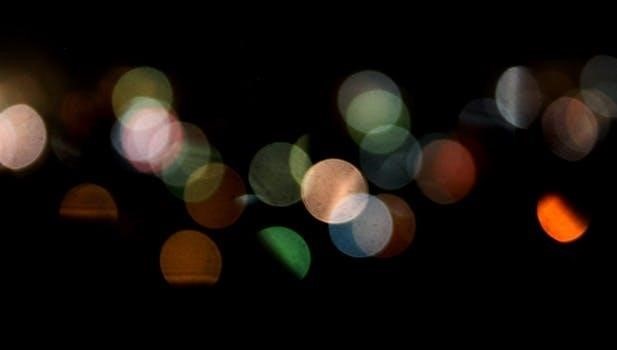sure on this shining night pdf

sure on this shining night pdf
Sure on This Shining Night PDF⁚ A Comprehensive Guide
This comprehensive guide delves into “Sure on This Shining Night,” exploring its rich history and various interpretations. This guide is a resource, offering insights into the poem, musical settings, and vocal instruction aspects.
Overview of “Sure on This Shining Night”
“Sure on This Shining Night” is a captivating work that exists at the intersection of poetry and music, offering a profound exploration of human emotion. It is a song cycle that has captivated audiences for decades. The text is based on a poem by James Agee, which explores themes of reflection, wonder, and the duality of existence.
The composition is known for its lyrical lines and seamless musicality, which helps to evoke a sense of awe and gratitude. Samuel Barber’s rendition is particularly known for its directness and simplicity, making it accessible and easy to understand while integrating European traditions. Morten Lauridsen’s choral composition also highlights the beauty and depth of the poem.
This piece has been used to teach singers the art of producing a pianissimo cantilena vocal line. Its popularity is amplified by anecdotes surrounding the song. “Sure on This Shining Night” stands as a testament to the power of collaboration between poets and composers, creating a work of art that resonates deeply with listeners.

The Poem by James Agee
The poem “Sure on This Shining Night” was written by James Agee. It was published in his 1934 collection, “Permit Me Voyage.” The poem paints a vivid picture of a starlit night. It uses imagery of shadows and light to explore themes of kindness, healing, and wholeness. The poem’s opening lines establish a sense of wonder and reflection.
Agee’s words evoke a feeling of peace. It also shows a sense of longing, capturing the contrast between earthly existence and the vastness of the cosmos. The poem uses contrasting elements, such as earth and heaven, to create a sense of duality and complexity. The shining night is both dark and light, cold and warm.
The poem’s lyrical quality lends itself beautifully to musical settings. It speaks from the perspective of an older man reflecting on his life. The poem’s exploration of themes like hope, despair, and the human condition make it a powerful and enduring work of art. It has inspired numerous composers.
Samuel Barber’s Musical Setting
Samuel Barber composed “Sure on This Shining Night” in 1938; It is part of his “Four Songs,” Op. 13. This setting is celebrated for its lyrical quality and seamless vocal lines. Barber’s composition captures the essence of Agee’s poem. It adds a layer of emotional depth through its melodic and harmonic language.
Barber’s musical setting is characterized by its American directness and simplicity. It also integrates European traditions. The piece features long, flowing phrases and a pulsating chordal accompaniment. The piano part intertwines with the voice. It creates a rich and expressive texture. The composition resembles songs crafted by 19th-century masters.
The song has become one of Barber’s most famous contributions to the genre. It is frequently programmed in the United States and Europe. It highlights Barber’s talent for composing for voices. It is often used by voice teachers to instruct singers in the art of producing a pianissimo cantilena vocal line. Barber later arranged the song for chorus.

Morten Lauridsen’s Choral Composition
Morten Lauridsen’s choral setting of “Sure on This Shining Night” premiered in 2005. It sets several lines of James Agee’s poem to music. This composition has become one of Lauridsen’s most recognized works. It is performed by choirs worldwide. Lauridsen’s setting captures the serene and reflective mood of Agee’s poem.
The choral arrangement is known for its soaring vocal lines and smooth harmonies. It evokes a sense of wonder and gratitude. The melody flows gracefully. It is supported by tasteful counterpoint in the accompaniment. Lauridsen’s composition is a gem. It is a blend of poetic and musical meaning.
Lauridsen’s work has been warmly embraced by performers and audiences. It offers a unique interpretation of Agee’s words. The piece resonates deeply with listeners. It provides a contemplative experience. The composition emphasizes the themes of hope and kindness. The piece is a testament to Lauridsen’s skill. It is a marriage of music and poetry.
Analysis of Poetic and Musical Elements
The poem “Sure on This Shining Night” employs lyrical and contrasting elements. James Agee uses imagery of light and shadow. The poem evokes a sense of both peace and longing. Key poetic devices include alliteration and assonance. These elements enhance the musicality of the verse. The poem’s structure contributes to its emotional impact.
Samuel Barber’s musical setting features lyrical lines. It intertwines with a pulsating chordal accompaniment. The piece showcases Barber’s skill in composing for voices. Morten Lauridsen’s choral version emphasizes smooth, peaceful harmonies. His setting captures the poem’s sense of wonder. Both composers use melody and harmony to reflect the poem’s themes.
Musical elements such as tempo and dynamics play a role. They enhance the emotional depth of the composition. The use of canonic lines creates texture. It adds complexity to the musical arrangement. The combination of poetic and musical elements creates a powerful and moving experience. The analysis reveals the artistry of Agee, Barber, and Lauridsen.
Themes and Interpretation
“Sure on This Shining Night” explores themes of hope, despair, and reflection. The poem reflects on life and the passage of time. It juxtaposes images of light and darkness. This highlights the duality of human existence. The “shining night” symbolizes both beauty and mystery. The poem considers themes of kindness and mortality. It evokes a sense of wonder.
Interpretations vary, ranging from personal reflection to spiritual yearning. Some view the poem as a meditation on nature. Others see it as an exploration of human emotions. The poem can be interpreted as a journey through memory. It may represent a longing for peace. The narrator reflects on past experiences.
The musical settings enhance these themes. Barber’s version captures the poem’s lyrical quality. Lauridsen’s arrangement evokes a sense of tranquility. Both composers amplify the emotional resonance. The music supports the poem’s themes of hope and introspection. Ultimately, the interpretation depends on the listener’s personal experience. The poem’s ambiguity allows for diverse readings.
Context and Historical Background
“Sure on This Shining Night” originated from James Agee’s 1934 poetry collection, “Permit Me Voyage.” This collection marked Agee’s early exploration of lyrical themes. The poem reflects the modernist literary movement. It came about during a time of great social and economic change. The Great Depression influenced Agee’s perspective.

Samuel Barber set the poem to music in 1938 as part of his “Four Songs, Op. 13.” Barber’s composition reflects his affinity for vocal music. His work integrated American directness with European traditions. Barber’s close relationship with Agee influenced the song’s interpretation. The song became one of Barber’s most famous contributions to the genre.
Morten Lauridsen created his choral setting in 2005. This added a new dimension to the poem’s legacy. Lauridsen’s version resonated with contemporary audiences. It became a popular piece for choral ensembles worldwide. The historical context provides a deeper understanding. It shapes how we perceive the poem and its musical adaptations. The work connects the past with the present.

Influence and Reception
“Sure on This Shining Night” has significantly influenced both vocal and choral music. Samuel Barber’s version quickly gained popularity. It became a staple in vocal recitals and concert programs. Singers praised its lyrical lines and emotional depth. Barber’s setting helped to solidify Agee’s poem’s place in popular culture. The piece is quintessential Barber. It is one of his most famous contributions.
Morten Lauridsen’s choral arrangement further broadened the song’s appeal. Choirs around the world embraced his setting. Its accessible harmonies and expressive melody resonated with audiences. Lauridsen’s piece is considered a choral gem. It is frequently performed by ensembles of all levels. The work is well received because of its universal themes of hope and reflection.
Voice teachers have also utilized the song for instruction. It’s used to teach singers how to produce a pianissimo cantilena vocal line. The song’s warm reception led Barber to arrange it for chorus later in his career. The arrangements sold over a hundred thousand copies. The song remains a favorite among solo singers and choral ensembles alike. It evokes a sense of wonder and gratitude.
Use in Vocal Instruction
“Sure on This Shining Night” has become a valuable tool in vocal instruction. Teachers frequently use both Barber’s and Lauridsen’s settings to develop essential skills. The song’s inherent lyricism provides an excellent platform for cultivating legato phrasing. Students learn to sustain long, graceful lines, enhancing their breath control and vocal projection.
The piece is particularly effective in teaching pianissimo singing. The delicate nature of the melody encourages singers to refine their soft dynamics. This helps them develop a nuanced and controlled sound. The song’s focus on beauty and expression allows students to explore emotional depth. They can communicate the poem’s message effectively.
Moreover, the canonical lines in Barber’s version offer opportunities to improve intonation. Singers must carefully listen and match pitches, strengthening their aural skills. The song’s overall accessibility makes it suitable for a range of vocal abilities. From beginners to advanced students, it offers valuable lessons in musicality and technique. Voice teachers, like Marinka Gurewich, use it to instruct singers in the art of producing a pianissimo cantilena vocal line.
Contrast and Duality in the Poem
James Agee’s “Sure on This Shining Night” is characterized by its exploration of contrasting elements, weaving a tapestry of duality that enriches its meaning. The poem juxtaposes light and darkness, embodied in the “shining night” itself, where stars cast shadows, creating a visual paradox. This interplay suggests a world where beauty and mystery coexist.
The poem further explores the contrast between earthly concerns and spiritual longing. The lines “Kindness must watch for me / This side the ground” speak to the speaker’s awareness of mortality. This is juxtaposed with the healing and wholeness of “High summer” and “Hearts all whole,” hinting at a desire for transcendence. The duality between despair and hope is palpable.
The notion of being both “alone” and surrounded by the “star made shadows” highlights the complex human experience of isolation amidst a vast universe. Agee masterfully uses contrasting imagery to evoke a sense of wonder and introspection. The poem invites readers to contemplate the inherent tensions within life. The contrast between earth and heaven provides a deeper understanding of the poem’s profound message. It also sums up the shining night, which is both dark and light, cold and warm.
Resources and Further Reading
To delve deeper into “Sure on This Shining Night,” several resources are available for further exploration. For those interested in James Agee’s poetry, his collection “Permit Me Voyage” (1934) provides the original context for the poem. Examining Agee’s other works can offer insights into his recurring themes and stylistic choices.
For musical analysis of Samuel Barber’s setting, consult music theory texts and scholarly articles focusing on his compositional style. Scores of both Barber’s and Morten Lauridsen’s versions are readily available for study and performance. Recordings of various interpretations can be found on major music streaming platforms.
The Library of Congress offers valuable resources, including articles and essays related to Samuel Barber and his works. Online databases, such as JSTOR and ProQuest, provide access to academic journals containing analyses of the poem and its musical settings. Additionally, biographical information on James Agee and Samuel Barber can enhance understanding of their artistic development and influences. Exploring vocal instruction resources can reveal how “Sure on This Shining Night” is used in pedagogical settings. Consider exploring Albert Blackwell’s Modalities blog for insightful perspectives on the poem’s themes.